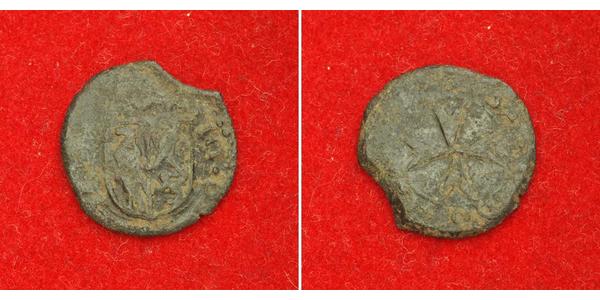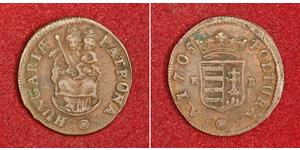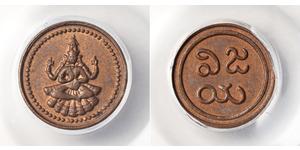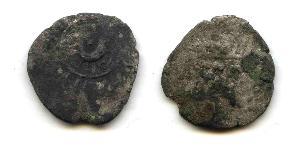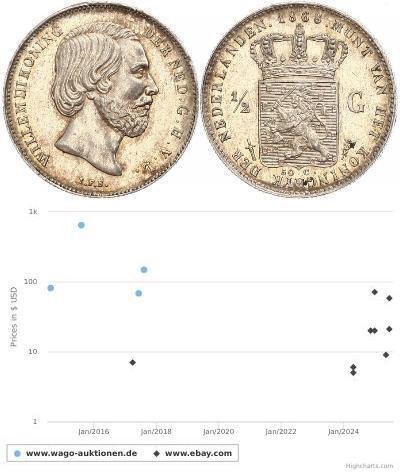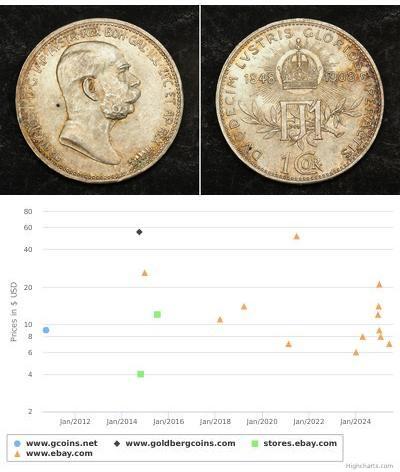(sold for $325.0)
1557, Knights of Malta, Jean de Valette. Copper Picciolo (Diniere) Coin. F+
Mint Period: 1557-1568
Reference: Restelli 130. R!
Denomination: Picciolo (Diniere)
Mint Place: Birgu or Fort St. Angelo
Condition: Weakly struck, minor deposits, otherwise F+
Material: Copper
Diameter: 15mm
Weight: 1.01gm
Obverse: Shield with arms of the Grand Master. Legend around.
Reverse: Maltese cross within inner circle. Legend around.
Fra' Jean Parisot de Valette, (4 February 1495, Parisot, Rouergue – 21 August 1568, Malta) was a French nobleman and 49th Grand Master of the Order of Malta, from 21 August 1557 to his death in 1568. As a Knight Hospitaller, joining the order in the Langue de Provence, he fought with distinction against the Turks at Rhodes. As Grand Master, Valette became the Order's hero and most illustrious leader, commanding the resistance against the Ottomans at the Great Siege of Malta in 1565, sometimes regarded as one of the greatest sieges of all time. Grandmaster La Valette did not live to see Valletta completed as he died at the age of 74 and was followed by Grandmaster Pietro De Monte. The foundation stone of Valletta was laid by Grandmaster La Valette in the year 1566.
The Knights Hospitaller (also known as the Sovereign Military Hospitaller Order of St. John of Jerusalem of Rhodes and of Malta, Order of St. John, Knights of Malta, and Chevaliers of Malta; French: Ordre des Hospitaliers, Maltese: Ordni ta' San Gwann) was a Christian organization that began as an Amalfitan hospital founded in Jerusalem in 1080 to provide care for poor, sick or injured pilgrims to the Holy Land. After the Western Christian reconquest of Jerusalem in 1099 during the First Crusade it became a religious/military order under its own charter, and was charged with the care and defense of the Holy Land. Following the conquest of the Holy Land by Islamic forces, the Order operated from Rhodes, over which it was sovereign, and later from Malta where it administered a vassal state under the Spanish viceroy of Sicily.
The Order lost many of its European holdings following the rise of Protestantism and French Egalitarianism, but survived on Malta. The property of the English branch was confiscated in 1540. In 1577, the German Bailiwick of Brandenburg became Lutheran, but continued to pay its financial contribution to the Order until the branch was turned into a merit Order by the King of Prussia in 1812. The "Johanniter Orden" was restored as a Prussian Order of Knights Hospitaller in 1852.
The Knights of Malta had a strong presence within the Imperial Russian Navy and the pre-revolutionary French Navy. When De Poincy was appointed governor of the French colony on St. Kitts in 1639 he was a prominent Knight of St. John and dressed his retinue with the emblems of the Order. In 1651, the Knights bought from the Compagnie des Îles de l'Amérique the islands of Sainte-Christophe, Saint Martin, and Saint Barthélemy. The Order's presence in the Caribbean was eclipsed with De Poincy's death in 1660. He had also bought the island of Saint Croix as his personal estate and deeded it to the Knights of St. John. In 1665, the order sold their Caribbean possessions to the French West India Company, ending the Order's presence in that region.
The decree of the French National Assembly Abolishing the Feudal System (1789) abolished the Order in France: V. Tithes of every description, as well as the dues which have been substituted for them, under whatever denomination they are known or collected (even when compounded for), possessed by secular or regular congregations, by holders of benefices, members of corporations (including the Order of Malta and other religious and military orders), as well as those devoted to the maintenance of churches, those impropriated to lay persons and those substituted for the portion congrue, are abolished (...) (The Decree Abolishing the Feudal System, August 11, 1789, J.H. Robinson, ed., Readings in European History 2 vols. (Boston: Ginn, 1906), 2: 404-409) The French Revolutionary Government seized the assets and properties of the Order in France in 1792.
Only 1$ shipping for each additional coin purchased!

|
Posted by:
anonymous 2016-07-11 |

